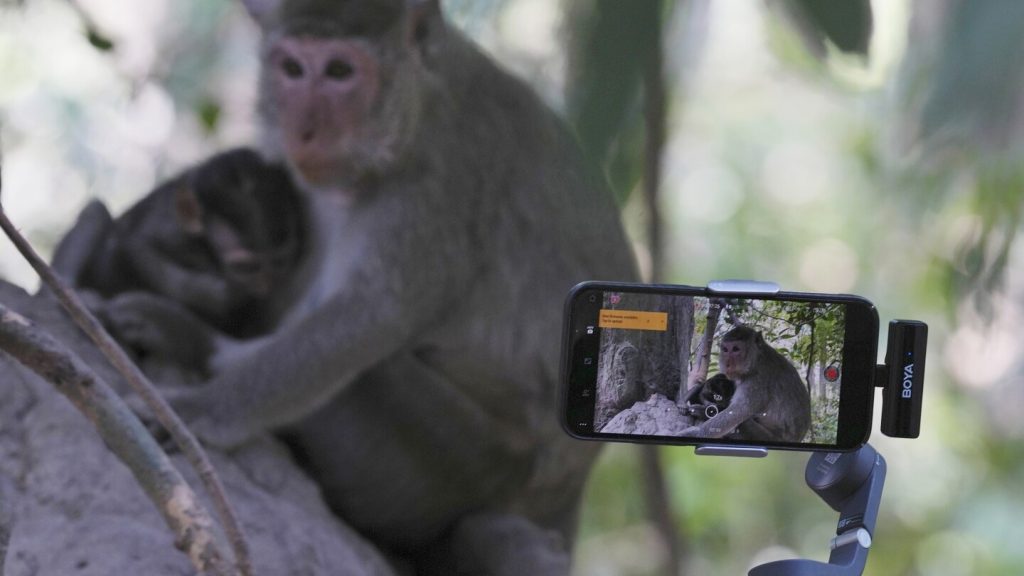The abuse of monkeys at the Angkor UNESCO World Heritage Site in Cambodia has become a growing issue, driven by the desire to create online content for cash. Videos show monkeys being mistreated in various ways, from being doused with water to having their genitals played with. While authorities like APSARA, the Cambodian office overseeing the Angkor site, are limited in their ability to stop YouTubers from filming, they are working with the Ministry of Agriculture to gather evidence for legal action against the worst abusers.
Social media platforms like YouTube and Facebook remove videos with graphic content, but videos of monkeys playing and interacting with humans remain popular, attracting thousands of views and subscribers. However, this close interaction can lead to multiple problems, including aggressive behavior towards tourists by the monkeys. Human feeding habituates the monkeys to handouts, making them dependent and causing damage to the ancient sites. Angry tourists have been bitten by aggressive macaques, leading to growing concerns about visitor safety.
Tourists visiting the Angkor temples view the monkeys as a novelty and often attempt to interact closely with them, offering food and taking photos. While some are cautious due to the risk of bites, others engage with the animals without understanding the potential consequences. Young men seeking to make money through YouTube channels exploit the monkeys for content, following them around with cameras and feeding them to keep them cooperative for filming. These actions contribute to the monkeys becoming less fearful of humans and more aggressive in their behavior.
Local YouTubers earn money by filming monkeys at Angkor, a practice that has become more popular during the COVID-19 pandemic due to a decline in traditional tourism. They view their interactions with the monkeys as mutually beneficial, claiming that they provide food to the animals in exchange for photo opportunities. Some YouTubers are employed by channel operators and earn a modest salary from their videos, using equipment provided by their employers. However, the issue of physical abuse remains a challenge for authorities like APSARA, who are struggling to find a solution to prevent further mistreatment of the monkeys.
Conservationists like Nick Marx from the Wildlife Alliance emphasize that the main driver of abuse is the pursuit of profit through online content. If viewers stopped watching these videos, the incentive for mistreating the monkeys would diminish. Authorities in Cambodia are working to address the issue by investigating the most serious abusers and building legal cases against them. However, the problem persists, with YouTubers continuing to film monkey interactions at Angkor and creating content that exploits the animals for financial gain. It remains to be seen whether efforts to protect the monkeys and preserve the heritage site will be successful in the face of growing online exploitation.


